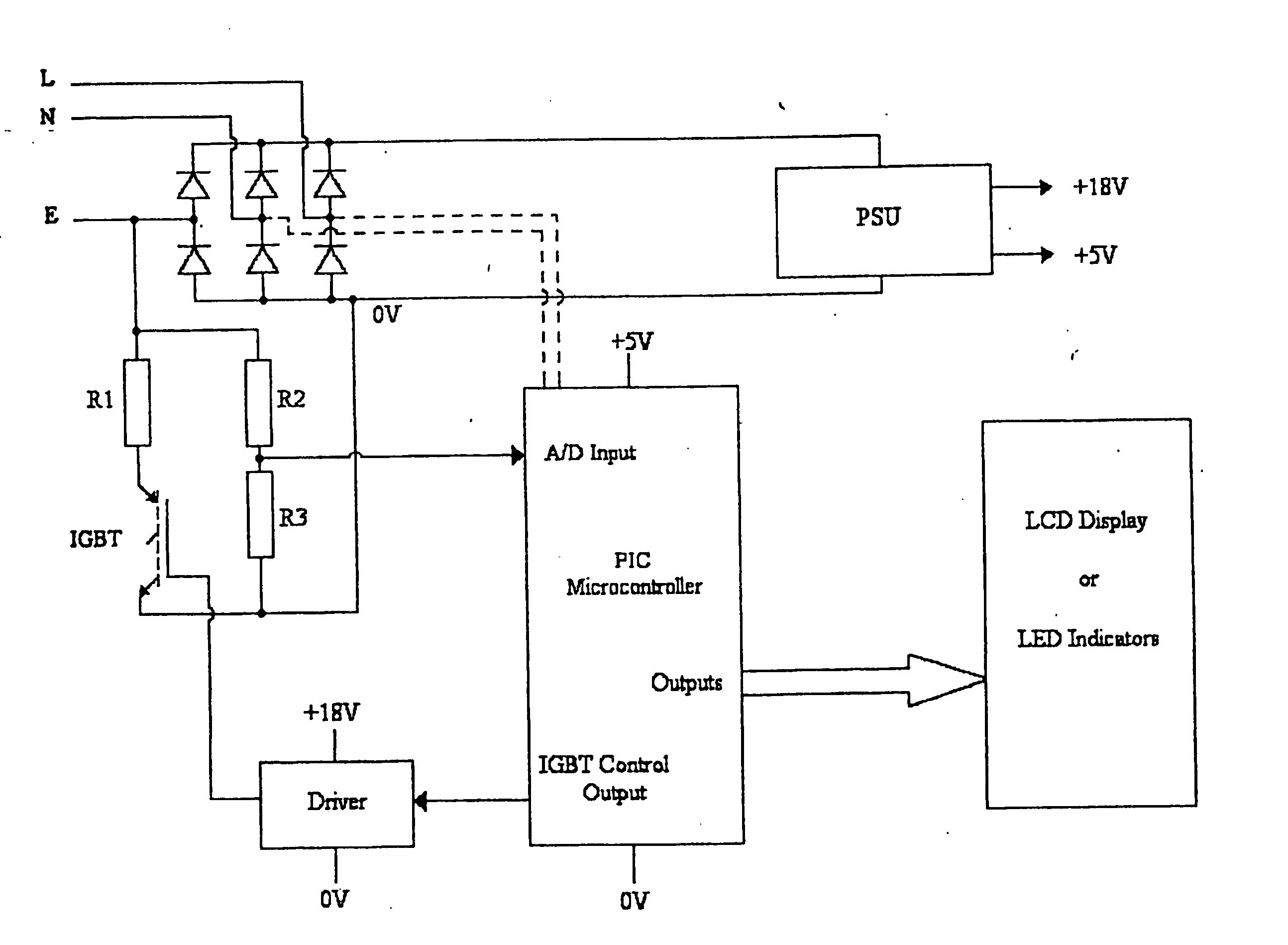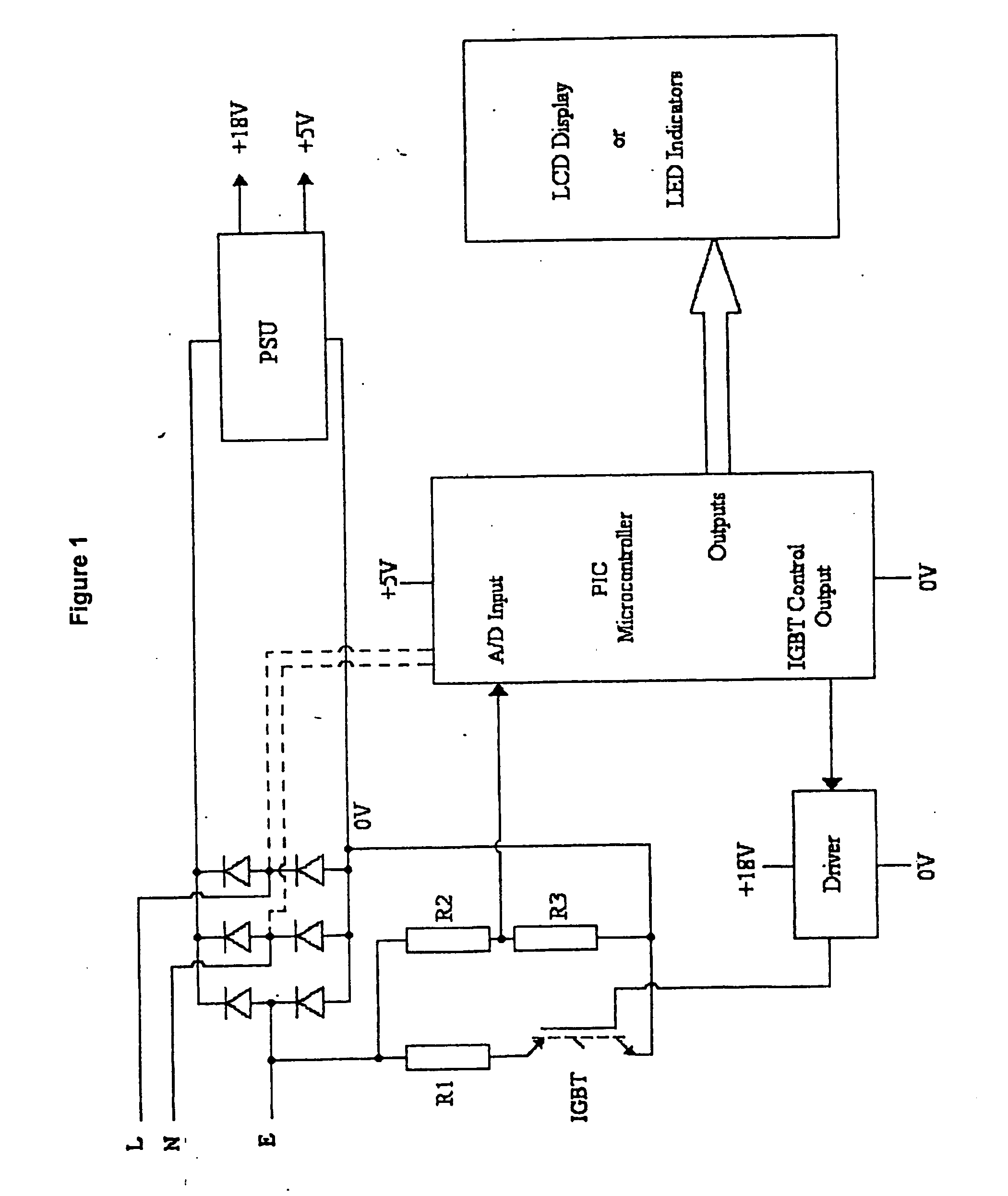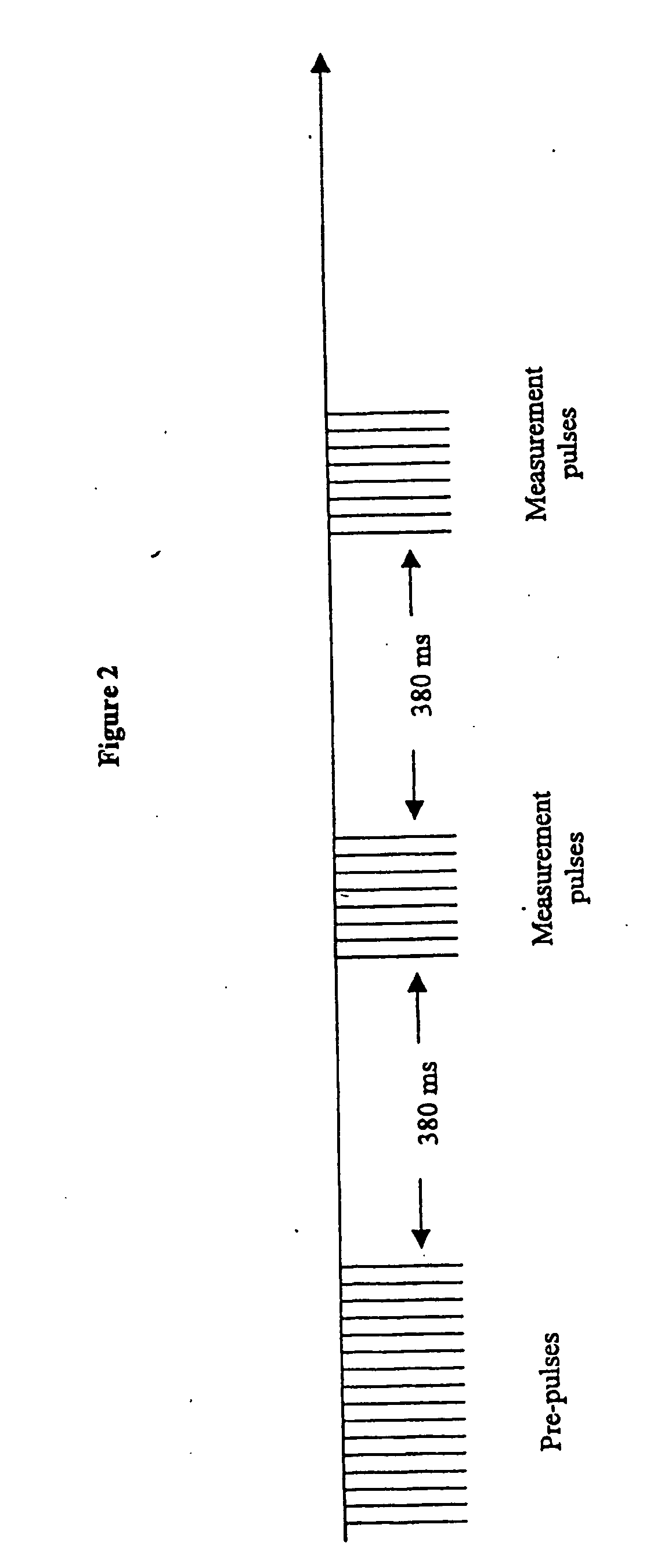Loop impedance meter
a technology of impedance meters and loops, applied in the direction of resistance/reactance/impedence, impedence measurements, instruments, etc., can solve the problems of phase and neutral currents not being balanced, supply out of service, generally inconvenient, etc., to reduce the time constant of the circuit, reduce the settling time, and reduce the effect of test curren
- Summary
- Abstract
- Description
- Claims
- Application Information
AI Technical Summary
Benefits of technology
Problems solved by technology
Method used
Image
Examples
Embodiment Construction
[0031] A loop impedance meter whose schematic circuit diagram is shown in FIG. 1 comprises a housing connectable to a typical A.C. mains supply, and a display for providing an indication of loop impedance. In a first example, for use typically by a non-specialist, the housing has pins for insertion into a typical mains socket, and a display comprising an array of light emitting diodes (LEDs). In a preferred embodiment, there are three indicators which each glow either green or red, the combined display indicating the impedance in one of six ranges. In this example, the ranges are 0 to 1.7 ohms; 1.7 to 5 ohms; 5 to 10 ohms; 10 to 50 ohms; 50 to 100 ohms and 100 to 500 ohms.
[0032] In an alternative embodiment of the invention, the housing instead has a liquid crystal display (LCD) giving a numerical readout of impedance. In another embodiment of the invention, Instead of using pins for insertion into a mains socket, adaptors and crocodile clips are provided instead.
[0033] In each ca...
PUM
 Login to View More
Login to View More Abstract
Description
Claims
Application Information
 Login to View More
Login to View More - R&D
- Intellectual Property
- Life Sciences
- Materials
- Tech Scout
- Unparalleled Data Quality
- Higher Quality Content
- 60% Fewer Hallucinations
Browse by: Latest US Patents, China's latest patents, Technical Efficacy Thesaurus, Application Domain, Technology Topic, Popular Technical Reports.
© 2025 PatSnap. All rights reserved.Legal|Privacy policy|Modern Slavery Act Transparency Statement|Sitemap|About US| Contact US: help@patsnap.com



